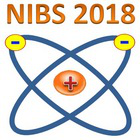Speaker
Alessandro Mimo
(Max-Planck-Institut für Plasmaphysik)
Description
Large negative ion sources for neutral beam injection rely on surface production of negative ions on a converter surface (plasma grid) in a low temperature plasma environment. To increase the negative ion production efficiency and reduce the amount of co-extracted electrons, the work function of the plasma grid is reduced by using Cs, which is evaporated in the source and redistributed by the plasma on the inner surfaces. In order to avoid a degradation of the plasma grid work function during the beam pulse a sufficient flux of Cs onto the plasma grid needs to be maintained, especially for long pulses (several hundred seconds). The Cs flux is influenced by the plasma distribution in the source, which can be affected by a vertical drift due to the magnetic filter field. In addition, the presence of a bias potential between the plasma grid and the other source walls can affect the plasma potential profile and thus the flux of Cs$^{+}$ ions. To investigate the effect of plasma drift on Cs dynamics, the Monte Carlo code CsFlow3D has been used to simulate long pulses for the source at the ELISE test facility (half the size of the ITER-NBI source) and a vertical asymmetry of the plasma profiles, i.e. plasma density, electron temperature and plasma potential, has been implemented. The Cs flux onto the plasma grid (both neutral and Cs$^{+}$ ions), the energy distribution of the Cs$^{+}$ ions impinging the grid (depending on the bias potential of the plasma grid) as well as the neutral Cs density resulting from the simulations will be presented. The latter will be directly compared with the experimental data from TDLAS (Tunable Diode Laser Absorption Spectroscopy). Further on, an alternative configuration of the Cs oven that relies on the direct evaporation close to the plasma grid has been simulated, in order to achieve a caesiation method that is independent from the plasma parameters and capable of delivering the required flux during long pulses.
Primary author
Alessandro Mimo
(Max-Planck-Institut für Plasmaphysik)
Co-authors
Dr
Christian Wimmer
(Max-Planck-Institut für Plasmaphysik)
Dr
Dirk Wünderlich
(Max-Planck-Institut für Plasmaphysik)
Prof.
Ursel Fantz
(Max-Planck-Institut für Plasmaphysik)

